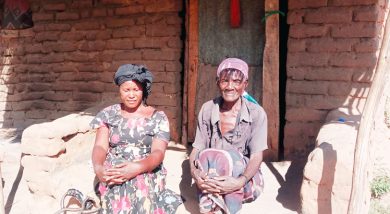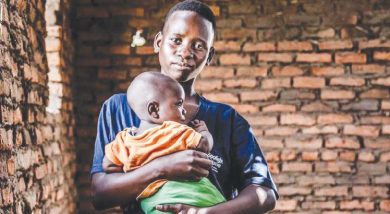Reviving sick banana industry
A bumpy earth road off M5 at Chisaka Trading Centre in Nkhotakota leads to Kayembe Farm Field School, a banana hinterland run by 20 members in Kapichira Village.
The farmers produce huge bunches of sweet bananas on an orchard larger than a football field for scores of customers from as far as Nkhotakota Town, Nkhata Bay and Salima.
This is a huge relief as the widespread banana bunchy top disease discovered in the district over a decade ago has wiped out plantations of the fruit Malawi now imports from Tanzania and Mozambique.
David Chipira, the chairperson of the farm field school, says the drought-resistant Grand-9 variety does not require much staking as the trunk is short and strong.

“The new variety is unique because it is highly resistant to drought and diseases such as the bunchy top virus. It needs less water, pesticides and disease control,” he says.
The field belonging to Chipira’s group is draped in healthy banana crops spaced three metres apart.
Before planting in March 2019, the banana growers dug square holes measuring 90 centimetres (cm) wide and 90cm deep. Their plantation is unlike many in the vicinity, which appear bushy, overcrowded by suckers competing for sunshine and diseased with small bunches if any.
He explains: “To grow good bananas, you need good spacing and deep holes. Bananas should be planted deep for good anchorage and to prevent the premature emergence of suckers.
“We put in each hole a wheelbarrow of manure, which we mix thoroughly with soil before planting.”
From their communal plantation, they have learnt that huge spacing exposes banana trees to water stress, especially in drylands.
“Water shortage prevents the formation of a canopy,” says Alice Soko, a club member. “The recommended spacing minimises staking. The canopy forms within eight months and moisture does not dry fast.”
Healthy look
After eight months, Chipira applied three wheelbarrows of manure around every plant, clearing animal waste from his village where pastoralists struggle to maintain a clean environment.
The plants produced massive bunches just about a year after planting, with harvesting getting underway six months later.
Every two weeks, the club members yield a tonne of fruits for their families and for sale.
Interestingly, Chipira has mastered their crop to the extent that they tell when to pick a bunch using naked eyes.
“When bananas are still immature, they have sharp corners. When ready for harvesting, they take a round shape and appear light green,” he explains.
The knowledge helps them pick, grade and pack their farm-fresh produce in crates for maximum profit.
They handle and transport the perishable commodity with care to ensure no fruit is bruised within its shelf-life.
The farmers sell their bananas mainly to traders in Nkhotakota and Salima along the shoreline of Lake Malawi, earning no less than K100 000 per month.
“We harvest the bananas all-year-round because we grow them in cycles. When harvesting mature ones, we plant new ones. After all, we have plenty of suckers here,” he says.
So, how did they get into banana farming when farmers in their neighbourhood and beyond are uprooting their plantations to avert the bunchy top virus?
The farmers are part of Kulima initiative financed by the European Union (EU) through the United Nations’ Food and Agricultural Organisation (FAO).
Chipo Chidothe, an agricultural extension officer in the rural locality, has been walking with the farmers from the start of the five-year programme spearheaded by the Ministry of Agriculture.
“We want to revive the country’s banana industry currently affected by numerous challenges, including the rampant disease which has affected every district. With this disease-resistant variety, the future looks promising for the country’s banana industry,” he says.
According to FAO, Malawi’s banana industry has all but died out over the last two decades due to the scourge caused by the pervasive virus.
The disease detected in all major banana-producing districts has reduced production.
The donkeywork to uproot diseased crops has forced some farmers to stop growing the fruit altogether and switch to other crops.
A better future
Jamikere M’bena, a farmer who lost his banana field to the virus transmitted by diseased suckers, offers sorrowful flashbacks of banana business before the disease was discovered.
Looking back, he says: “Banana-growing used to be the main source of income and livelihood for many farmers and other players in the value chain, but the enemy we have never seen with our eyes brought untold misery to all of us.
“Every day, people along the lakeshore corridor see truckloads of bananas from Tanzania going to markets starved of local supply while poverty kicks in.”
Looking forward, M’bena says the future looks bright with intervention.
He says: “Our livelihoods hinged on bananas. The fruit helped us support our families and acquire vital household items. We need to find a solution to the disease which has affected banana production nationwide and resilient varieties are part of the recovery process. Not all is lost.”
Currently, Kulima strategy is led by the Department of Agriculture Research Services in the Ministry of Agriculture and Food Security. The department contributes towards extensive multiplication of clean planting materials using the tissue culture technology.






One Comment